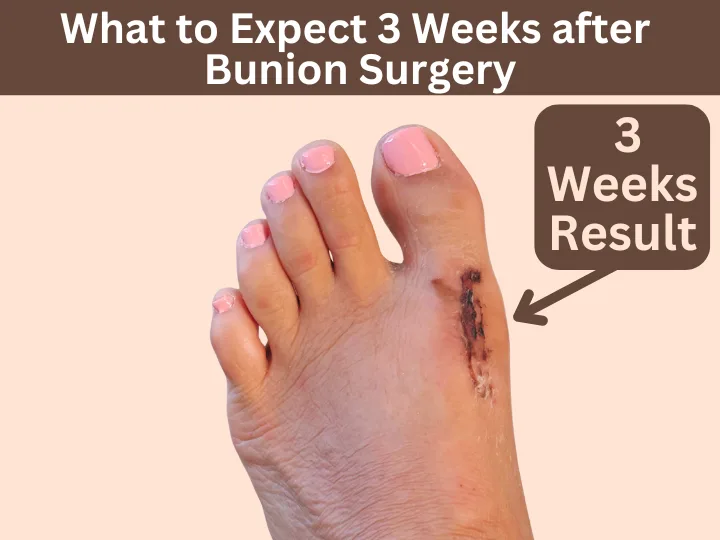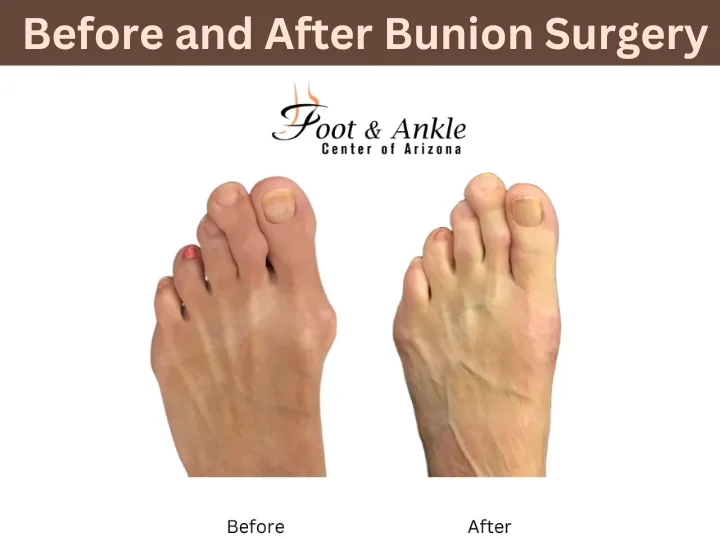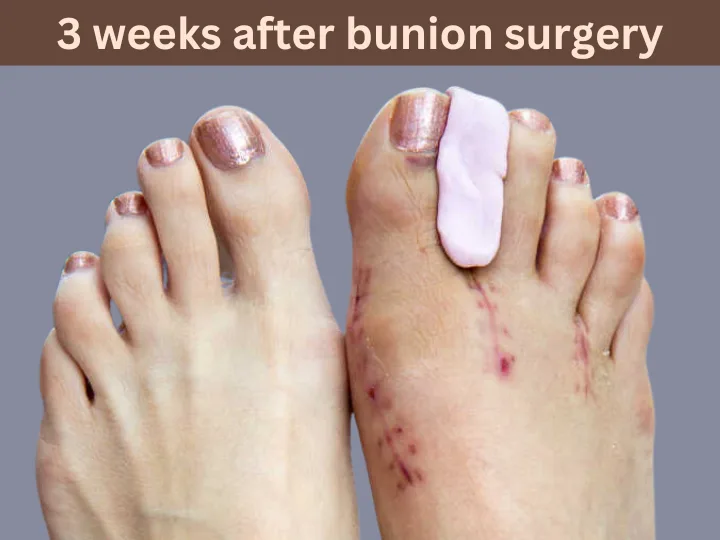Bunion surgery is a common procedure aimed at alleviating pain and correcting foot deformities caused by bunions. Recovery from this surgery is a gradual process that requires careful management and patience. By the 3-week mark, most patients have passed the immediate post-operative phase and are entering a critical stage of healing. Understanding what to expect during this period can help you stay on track for a successful recovery. In this article, we are going to discuss general recovery milestones, activities, and care tips for 3 weeks post-op.
1. General Recovery Progress
In comparison, after 3 weeks, improvements from the first week onward should be very apparent. Any swelling and bruising are still there but should be less than in the first days. Pain is often minimal so that you can rely on pain medication less. With your foot still in recovery, the surgical site could demonstrate early signs of healing-such as scabbing or scar formation.
Your body is still recovering, which includes taking in energy; hence, there is a need to heed what it says. Though improvement might have set in, complete recuperation is still some weeks or months away, considering the type of surgery and the response of the patient to post-surgical care.
2. Mobilization and Activity Level
By the third week, you may gradually increase your mobility. Many patients are still using assistive devices like crutches, walkers, or a walking boot to avoid putting full weight on the affected foot. Partial weight-bearing may be permitted, but this depends on your surgeon’s recommendations.
Walking short distances with support is often manageable, but overexertion should be avoided. Your foot may feel stiff, and pushing yourself too hard can set back your progress. It’s essential to follow your surgeon’s guidelines for weight-bearing and mobility during this period.
3. Pain Management
A moderate degree of pain is inherent to any injury-healing process, so this should be relatively well-tolerable by the third week already. More often than not, any residual discomfort can be tolerated and treated with over-the-counter medications like ibuprofen or acetaminophen. Many prescription painkillers by this time are no longer required, though you are to continue using them, where instructed by your doctor.
Other measures of pain management may include elevating your foot, the use of ice packs, or relaxation techniques. If the pain becomes worse or remains severe, however, one must revisit his or her doctor to exclude complications.
4. Wound Healing and Care
By this time, the surgical wounds should be well on their way to healing. The stitches may have been removed or your surgeon may be planning to remove them shortly. It is important that the surgical site be kept clean and dry to prevent infection. Follow your doctor’s instructions regarding dressing changes, if necessary.
Avoid soaking your foot in water unless your surgeon has explicitly approved this. Watch for signs of infection, such as redness, warmth, or discharge. Keeping the wound protected and properly cared for is critical to ensuring a smooth recovery.
5. Swelling and Bruising
At this stage, swelling and bruising are to be expected; however, they should be much less pronounced than in the first weeks. Swelling is often worse at the end of the day or after long periods of standing. To minimize this, elevate your foot above heart level when resting, and apply ice packs according to your doctor’s advice.
Compression wraps or socks may also be recommended to help reduce swelling. If the swelling is excessive, persistent, or accompanied by severe pain, it could indicate a complication that requires medical attention.
6. Physical Therapy and Exercises
Some patients can start light physical therapy during the 3-week period. This generally includes exercises to help restore range of motion and flexibility in the affected foot. These exercises could be as simple as stretches or wiggling of the toes, which reduce stiffness and enhance circulation.
Do only the exercises recommended by your healthcare professional. No high-impact or strenuous activities should be done in order not to injure the surgical site or impede the healing process.
7. Footwear Recommendations
Proper footwear plays a critical role in protecting your foot and supporting recovery. At 3 weeks post-surgery, you’re likely still wearing a walking boot or post-operative shoe. These are designed to stabilize the foot and prevent unnecessary pressure on the surgical site.
Avoid wearing regular shoes except when your surgeon says it is okay. Tight or restrictive shoes may interfere with the healing process and increase swelling. Instead, focus on comfortable, supportive options that accommodate your foot’s current condition.
8. Follow-Up Appointments
Most surgeons will have follow-up appointments around the 3-week mark to check on the progress. During this visit, your doctor will check the site of surgery, review X-rays if needed, and address any questions you may have.
You will also be able to talk about your pain, range of motion, and revision to your recovery plan, if necessary. This is where you need to make an appointment and be sure you tell your health professionals how it is going for you.
9. Emotional and Psychological Aspects
Recovery after surgery is mentally exhausting, especially when the rate of improvement seems to be at a snail’s pace. One may feel frustrated, impatient, or anxious during this period. It is difficult to keep up with a positive attitude, but it is necessary for successful recovery.
Lean on your support system of family and friends for encouragement. Engaging in light activities you enjoy, such as reading or watching movies, helps distract you from discomfort and keeps your spirits high. If you’re feeling down emotionally, consider speaking with a counselor or joining a support group for people recovering from foot surgery.
10. Warning Signs and When to Call Your Doctor
While most patients recover smoothly, it’s important to recognize signs of potential complications. Contact your surgeon immediately if you experience:
- Severe or worsening pain.
- Uncontrolled swelling or bruising.
- Signs of infection, such as redness, warmth, discharge, or fever.
- Numbness, tingling, or changes in skin color around the foot.
Early intervention can prevent minor issues from becoming major setbacks. Don’t hesitate to reach out to your healthcare team if you have concerns about your recovery.
FAQs
How much pain is normal 3 weeks after bunion surgery?
Moderate pain is common but should be manageable with over-the-counter medications. Severe pain should be reported to your doctor.
Can I walk without a walking boot at this stage?
Most patients still use a walking boot or assistive devices. Transitioning to regular shoes depends on your surgeon’s approval.
Is it safe to start driving 3 weeks after bunion surgery?
Driving may not be recommended if the surgery was on your right foot or if you’re still taking pain medications. Consult your surgeon.
What should I do if my swelling hasn’t reduced?
Persistent swelling may be normal, but discuss it with your doctor to rule out complications.
Are stitches usually removed by the third week?
In many cases, stitches are removed around this time, but it varies depending on your surgeon’s protocol.
Conclusion
The 3-week point following bunion surgery marks an important milestone in the timeline of your recovery. You should be experiencing less pain and swelling, more ease with your mobility, and beginning signs of healing. To make continued progress, following the advice of your surgeon and following through with follow-up appointments while maintaining a positive attitude is crucial.
Recovery will take some time, but every day brings you closer to a normal life, free from pain. Be patient, and don’t lose the result is worth all the effort.






